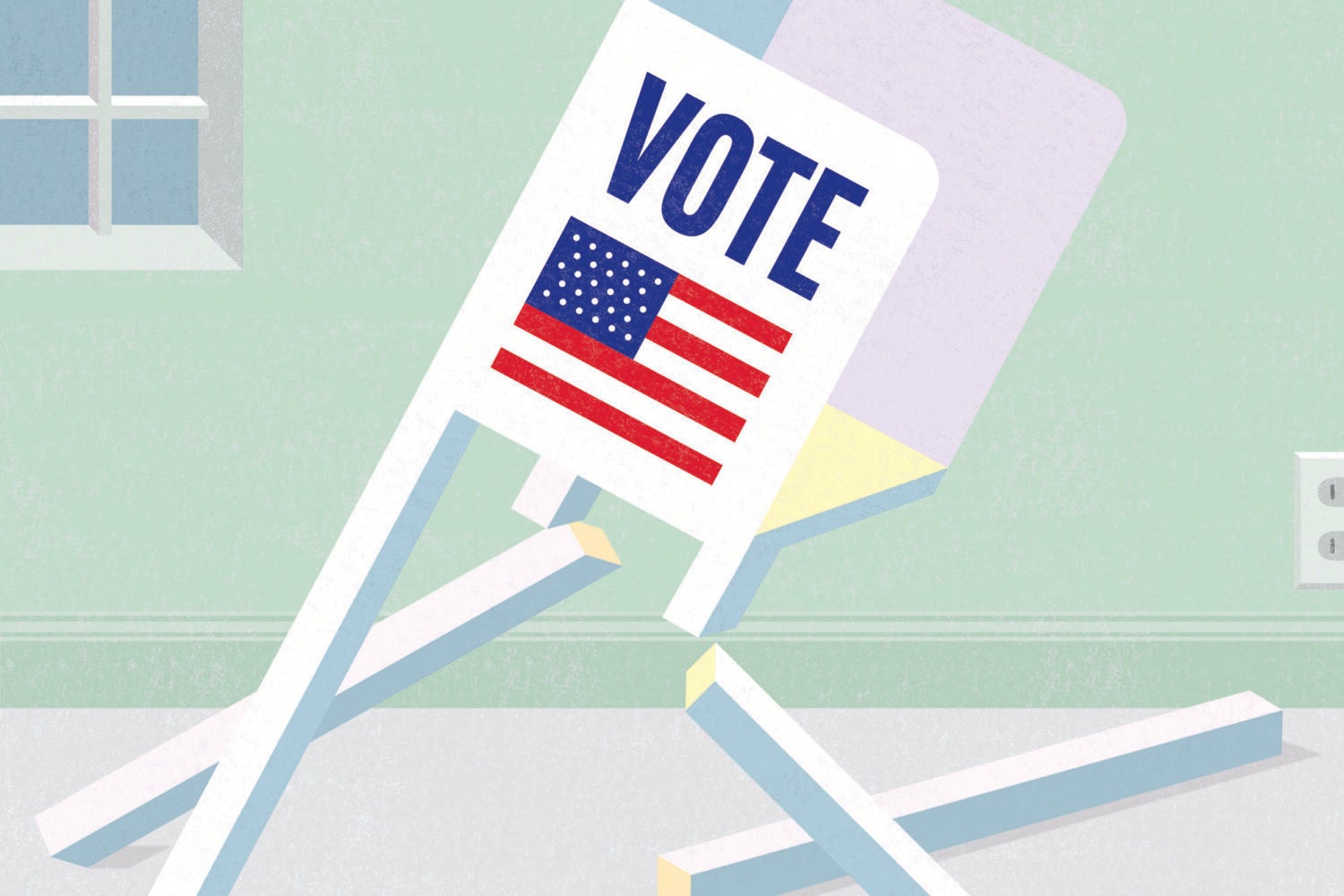During President Donald Trump’s speech on Jan. 6, 2021, when he urged his followers to march to the U.S. Capitol, he said: “I hope Mike is going to do the right thing.” The “right thing,” from his perspective, was for his vice president, Mike Pence, to determine which votes in the Electoral College should count and reject those votes that would prevent Trump’s reelection, based on a novel legal interpretation that the U.S. Constitution granted him that authority. It was, according to Lawrence Lessig, Roy L. Furman Professor of Law and Leadership at Harvard, “the dumbest possible strategy … that was certain to fail.”
But, according to Lessig, other strategies to overturn an election may succeed on Jan. 6, 2025.

In their new book, “How to Steal a Presidential Election,” Lessig and his co-author, Matthew Seligman, a fellow at the Constitutional Law Center at Stanford Law School, outline legal approaches that could be employed in a contested 2024 presidential election and ways to fix the flaws that endanger a fair result.
The book began to take shape at Harvard Law School before the 2020 election, when the authors taught a seminar called War Gaming 2020. In it, students examined the Electoral Count Act of 1887, which set out the procedures for counting electoral votes for the presidential election, to answer the question, as the book puts it, “[H]ow could you hack the rules to get a result different from what the election should legitimately yield?”
The authors chose to expose those “hacks” not, of course, to encourage people to employ them. In an interview, Lessig said he expects that those who might seek to overturn legitimate election results will, given more time, prepare more effective strategies than were employed in the frenzied days leading up to Jan. 6, 2021. He is drawing attention to those threats so that people will be ready to combat them.
The authors outline vulnerabilities in our system and steps to try to address them.
“We want people to recognize there are people who are thinking about how to steal a presidential election, and we need people thinking on the other side,” said Lessig. “Our thinking was: Let’s just lay it out. Let’s give everybody a chance to understand it and unpack it. And then be prepared.”
Chapters of the book analyze different schemes to steal an election and their chance for success. After making a case against the theory that the vice president has any constitutional authority in the counting of electoral votes, the authors uncover what they see as more serious threats. One is what they call “faithless electors,” whereby presidential electors could be induced to vote for a different candidate from the one they pledged to vote for. While the Supreme Court ruled that states could compel electors to vote for the candidate for whom they pledged, not all states have implemented such rules and, in those that have, electors’ votes could still be counted even if they defied those rules. Another strategy, they write, involves rogue governors certifying electors who vote contrary to the popular vote in their state. State legislatures also could change the results, by determining that they are the final judge of election results or even canceling the election and choosing state electors themselves. The most dangerous strategy that likely has the greatest chance to flip the outcome, according to the authors, is for state legislatures to require electors to cast votes based on the legislatures’ direction, a maneuver that would currently be legal.
The authors outline steps to fix the flaws in presidential democracy, including Congress strengthening the Electoral Count Reform Act of 2022. Yet, they acknowledge that while fixing flaws may decrease the opportunity to exploit the rules, it cannot address a lack of good faith. The flaws, after all, have not caused real trouble until recent times.
“It really was never necessary to actually understand the rules carefully because good faith or goodwill would always fix any problem,” Lessig said. “Congress was never going to rely on these arcane rules to pick somebody who wasn’t actually the president. Now you need to know these arcane rules. Now you need to really understand what moves could be made, and how to muster protection against those rules.”
The system was also vulnerable during the presidential election of 2020, but the nation was saved, according to Lessig, by Republican officials in states such as Georgia and Arizona who recognized that the results were clear. Yet the closer the election is in 2024, the greater the risk, he said: “If you get it extremely close, especially if it’s one state that’s deciding it, that’s where we think there’s enormous anxiety, and especially if they’ve done a good job in building the predicate for believing the election was just not fair.”
As a longer-term solution, Lessig advocates changing the system to elect the president through a nationwide popular vote or to allocate all states’ electors based on a proportional vote (done now by only Maine and Nebraska) rather than winner-take-all, which results in a small number of swing states deciding the election. The way Americans elect the president is among many problems plaguing our system of democracy, according to Lessig, who also points to campaign funding, gerrymandering, voting access, and the Senate filibuster.
“We won’t get anything serious done in America through our government unless we fix this problem,” he said. “There is no chance for sensible policy in the face of the corruption inside of our democracy right now. I don’t know whether it’s possible or not. … I just know what we have to achieve, and we have to fight as hard as we can to get there.”
